Facebook and Instagram ads can feel like a maze, especially when you’re trying to figure out the best ad funnel for your industry. Every business sector has its quirks, so you really need a tailored approach to get the most bang for your buck and actually reach people when it counts.
The most effective Facebook and Instagram ad funnel usually has three main stages: awareness content to introduce your brand, consideration content with testimonials or demos, and conversion content packed with strong calls to action that fit your industry’s buying cycle.
This structure works for most industries, but you’ll want to tweak it based on how your audience acts and how long your sales cycle typically runs.
Sure, the basic funnel looks similar everywhere, but the details matter. E-commerce brands often see wins with product carousels at the conversion stage. Service businesses, though, might get better results from video testimonials during consideration. Knowing these little differences can make a big impact and help you spend your ad budget smarter.
Understanding Facebook & Instagram Ad Funnels
Facebook and Instagram ad funnels are all about turning casual scrollers into loyal customers. The trick? Delivering the right content at the right time, guiding folks from first glance to final purchase.
What Is a Facebook Ad Funnel?
A Facebook ad funnel is just a fancy way of describing the path you want your customers to take on the platform. You’re not just tossing ads out there and hoping for the best—you’re leading people from “never heard of you” to “take my money” with a series of targeted ads.
Most people aren’t going to buy the first time they see your product. A funnel helps you nurture those leads, giving them a few nudges along the way.

With nearly 3 billion people using Facebook every month, it’s a goldmine for funnels. You can catch people at any stage—whether they’re just browsing or ready to buy.
A solid Facebook funnel usually has three or four stages. Each one has its own goal and ad format, and together they build trust before you ask for the sale.
How Social Media Funnels Work
Social media funnels work by getting more specific as users show interest. You start wide, with awareness campaigns aimed at people who have no clue who you are.
Once someone likes, comments, or clicks, they move into the consideration phase. Here, they’ll see more detailed info—maybe a video demo, testimonial, or product comparison.
Facebook’s targeting tools let you follow up with these warm leads using conversion-focused ads. It’s a step-by-step process that matches how people actually buy, instead of rushing them.
Key Elements of Effective Social Media Funnels:
- Progressive messaging that lines up with what users want
- Audience segmentation based on how engaged they are
- Strategic retargeting to keep interested folks in the loop
- Multi-format content that fits each funnel stage
The Buyer’s Journey on Meta Platforms
The buyer’s journey on Facebook and Instagram usually follows a predictable path. First, there’s the awareness stage, where people spot your brand in their feeds, Stories, or Reels.
Next comes the consideration stage. Here, folks start comparing your offering to others. They might check out your profile, watch some product videos, or skim through reviews.
Then you hit the conversion stage. This is where people finally make a decision. Great ads at this point create urgency—think limited-time deals or free shipping.
After purchase, there’s the retention stage. You keep customers engaged with community perks or exclusive content, hoping they’ll stick around and maybe even tell their friends.
Meta’s analytics let you see how users move through this journey so you can tweak your approach at each step.
Key Stages of a High-Performing Funnel
Good Facebook and Instagram ad funnels move people from “just looking” to loyal customer. Each stage has its own job, with different ad formats and goals that match where people are in their buying journey.
Top of the Funnel (TOFU): Building Awareness
This is where you introduce your brand to people who’ve never heard of you. TOFU content should entertain, educate, or inspire—definitely not hard sell.
Effective TOFU ad formats include:
- Short videos showing off your brand personality
- Carousels with eye-catching visuals and value props
- Blog promos that tackle industry pain points
Here, you’ll want to watch reach, video views, and engagement rates. Keep it broad—focus on your audience’s problems, not detailed product specs.
Target cold audiences using interests or lookalikes. The aim is to become a trusted voice, not to close the sale right away.
Middle of the Funnel (MOFU): Driving Consideration
MOFU is for people who know you but aren’t ready to buy. This is where you offer more details on how your stuff actually helps them.
Strong MOFU content types:
- Product demo videos
- Customer testimonial ads
- Guides that solve specific problems
- “How-to” content to show your expertise
Here, retarget folks who’ve visited your site, watched your videos, or engaged with your posts. Focus on benefits, not just features, and tackle common objections.
Use clear calls-to-action that encourage more engagement, but don’t push for the sale just yet. Keep an eye on click-through rates, time on site, and leads generated.
Bottom of the Funnel (BOFU): Encouraging Conversions
BOFU is all about closing the deal. These people are warmed up and just need that last nudge to buy.
Effective BOFU tactics:
- Limited-time deals and promos
- Free trials or consultations
- Product comparison ads that show your edge
- Industry-specific success stories
Target warm audiences—think cart abandoners or high-intent visitors. Your message should create urgency and address any last-minute doubts.
Go for strong, direct calls-to-action and make it super easy to complete the purchase. Watch conversion rates, cost per acquisition, and return on ad spend here.

Post-Purchase: Fostering Repeat Business
Just because someone bought doesn’t mean you’re done. Post-purchase marketing aims to boost repeat sales and referrals.
Successful post-purchase strategies:
- Cross-sell and upsell campaigns for related products
- Exclusive loyalty perks for customers
- Referral programs with real incentives
- Tips on getting the most from their purchase
Target your existing customers using custom audiences built from purchase data. Make them feel valued—like they’re part of something special.
Track retention, repeat purchases, and satisfaction. Honestly, these campaigns often deliver the best ROI since it’s usually cheaper to keep a customer than find a new one.
Tailoring Your Funnel for Industry & Audience
If you want your ad funnel to actually work, you’ve got to know who you’re talking to and how your industry shapes their buying decisions. People respond differently, so you need to customise.
Defining Your Target Audience
Getting your audience right is the foundation. Start by figuring out who really needs what you’re selling. Look at both demographics (like age, location, income) and psychographics (values, pain points, dreams).
For cold audiences, stick with content that tackles big industry challenges. Educational videos and carousel ads shine here.
Warm audiences are a different animal. They already know you, so highlight what makes you special and show off testimonials. Retargeting should answer their biggest doubts.
Industry context is huge. Financial brands might need longer funnels to build trust, while impulse buys can get away with a shorter path to conversion.
Key targeting parameters to consider:
- Demographics like age and location
- Online interests and behaviors
- How they’ve engaged with your content before
- Where they are in the buyer’s journey
Using Buyer Personas and Demographics
Buyer personas help you turn vague audience segments into real people with actual needs. They make your messaging way more relatable.
A good persona covers:
- Demographics (age, gender, job)
- Goals and struggles
- Common objections
- Favorite ways to communicate
- How they make decisions
Facebook and Instagram offer strong demographic targeting. Fashion brands, for example, might zero in on women aged 25-34 interested in sustainability. B2B software companies could target business owners who are into tech.
User-generated content hits differently depending on age. Younger folks usually love authentic photos and videos, while older pros might trust polished case studies more.
Check out your own customer data and use Facebook’s Audience Insights to spot hidden interests and behaviors you might’ve missed.
Adapting to B2B vs. B2C Businesses
B2B and B2C funnels aren’t built the same. B2B deals usually take longer and involve more decision-makers, so you’ve got to nurture leads more carefully.
If you’re B2B, focus on:
- Thought leadership that proves you know your stuff
- ROI-driven case studies
- Webinars and white papers for education
- LinkedIn integration if you want to get fancy
B2C funnels can move a lot faster, especially for cheap or fun items. They work best with:
- Emotional visuals
- Social proof (think reviews and testimonials)
- Urgency—limited-time offers
- A checkout that’s simple and smooth
Industry details matter. Healthcare B2B has to follow strict rules, while retail B2C might lean into seasonal trends and urgency.
Test different ad types depending on your business. B2B often gets good results with lead forms, while B2C might do better with collection ads showing off lots of products.
Choosing the Right Ad Types and Creative
Your Facebook and Instagram funnel’s success depends a lot on picking the right ad formats and making creative content that actually clicks with your audience. Match your creative to your industry and campaign goals.

Video Ads Versus Carousel Ads
Video ads are awesome for storytelling and showing products in action. They’re perfect for industries with visual appeal or more complicated offers. Generally, videos pull more engagement than static images, especially for awareness.
Instagram users tend to watch videos under 15 seconds, while Facebook folks might stick around for up to a minute. If you’re in fashion, hospitality, or fitness, showing your stuff in motion can make a big difference.
Carousel ads let you show multiple images or videos in one go. They’re a hit for e-commerce, real estate, and auto, where you want to highlight product variety or features.
Crafting Effective Ad Copy & CTAs
Good ad copy speaks straight to customer pain points and spells out benefits, not just features. Keep your main point short—125 characters or less is usually a sweet spot.
Make your calls to action clear and urgent. Instead of “Learn More,” try “Book Your Free Session” or “Shop the Sale Now.”
Each funnel stage needs its own copy style. For awareness, go educational. In consideration, solve specific problems. At conversion, use direct offers and strong CTAs.
Leveraging Social Proof and Lead Magnets
Social proof can totally transform your ad performance by building trust fast. Throw customer testimonials, case studies, and user-generated content right into your ads to show off real-world value.
B2B companies get a lot out of featuring client logos and testimonials. E-commerce brands? They usually see strong results from customer reviews and product ratings.
Lead magnets should actually help people and fit your industry. E-commerce businesses might go with limited-time offers or discount codes.
Service-based companies tend to do better with free consultations or helpful guides. Facebook Lead Ads, especially with those handy pre-populated forms, make it way easier for people to sign up—less hassle, more conversions.
Optimising Funnel Performance & Measurement
If you want your Facebook and Instagram ad funnels to work, you’ve gotta keep tweaking things and let data guide you. Good measurement systems and optimisation strategies help you get the most out of your social media marketing budget.
Campaign Objectives and Tracking
Set clear campaign objectives from the start. Each objective in Facebook Ads Manager matches up with different customer journey stages, whether that’s awareness, consideration, or conversion.
The Meta Pixel (yeah, it used to be Facebook Pixel) is key for tracking. Pop that code on your site and it’ll follow what users do, tying their actions back to your ads.
If you’re running an Australian business, you really need to set up event tracking the right way. Use standard events like “Purchase,” “Add to Cart,” and “Lead” to see which ads actually drive results.
Custom conversions help you track goals that standard events miss. This is super useful for businesses in more niche sectors who need to see what really matters to them.
Check your tracking setup regularly. Even small Pixel issues can mess up your data and waste your ad spend.
Retargeting and Remarketing Strategies
Retargeting is honestly one of the best moves in your funnel optimisation playbook. These campaigns go after users who’ve interacted with your brand but didn’t convert yet.
Build segmented Custom Audiences based on:
- Website visitors (past 30, 60, 90 days)
- Video viewers (25%, 50%, 75%, 95% completion)
- Engagement with Facebook/Instagram content
- Email list subscribers
Each group needs its own message. Someone who ditched their cart wants something different than someone who just checked your homepage.
Lookalike Audiences help you reach new people who are a lot like your best customers. Start with a small percentage (1-3%) for better matches, then go broader if it’s working.
Don’t forget frequency caps. Most Aussies get annoyed if they see the same ad more than 3-5 times, and that can backfire on your brand.
Measuring Conversion Rates & ROI
Conversion rates tell you how well your funnel’s working. For Australian e-commerce, you’ll usually see 1-3%, while B2B services might only hit 0.5-1.5%.
Key metrics to watch:
- Click-through rate (CTR)
- Cost per click (CPC)
- Cost per lead (CPL)
- Cost per acquisition (CPA)
- Return on ad spend (ROAS)
Look at these numbers at every funnel stage to spot where things get stuck. If your CTR is high but conversions are low, your landing page probably needs work.
Attribution models can really change how your results look. The default 28-day click, 1-day view model doesn’t fit every business—especially if you’ve got a longer sales cycle, like a lot of Aussie B2B companies.
Run A/B tests often. Just test one thing at a time, like your headline, image, or call-to-action, so you know what’s actually making a difference.
Budgeting and Scaling for Growth
Strategic budget allocation across funnel stages helps you squeeze more out of every dollar. Top-of-funnel awareness campaigns usually need a bigger reach, and honestly, you can get away with higher CPAs there than you can at the bottom of the funnel.
Start with pretty modest daily budgets—think AUD $20-50. This lets you gather some baseline data without burning through your cash.
Once you spot ad sets that are consistently pulling in ROAS above your targets, nudge those budgets up by 15-20% at a time. No need to rush; slow and steady usually works best here.
Ads Manager’s automated rules can take some of the manual work off your plate. You can set rules to bump up spend on ad sets that are crushing it, or pause the ones that aren’t meeting your KPIs.
If your business is time-sensitive, dayparting might be worth a look. Let’s say your data shows conversions spike at certain hours—why not shift your ad delivery to those times instead of running all day?
Seasonal swings hit Australian consumer behaviour pretty hard. It makes sense to throw more budget at peak periods for your industry, but don’t totally disappear during the slow times—staying visible still matters.







